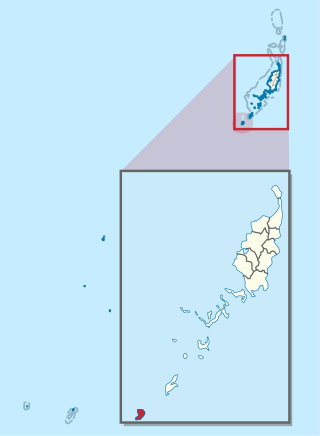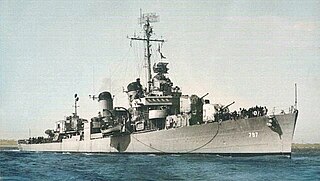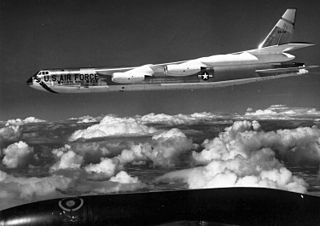Related Research Articles

The Battle of Peleliu, codenamed Operation Stalemate II by the US military, was fought between the United States and Japan during the Mariana and Palau Islands campaign of World War II, from 15 September to 27 November 1944, on the island of Peleliu.

Joseph John Rosenthal was an American photographer who received the Pulitzer Prize for his iconic World War II photograph Raising the Flag on Iwo Jima, taken during the 1945 Battle of Iwo Jima. His picture became one of the best-known photographs of the war, and was replicated as the United States Marine Corps War Memorial in Arlington, Virginia.

The Mariana and Palau Islands campaign, also known as Campaign Plan Granite II, was an offensive launched by United States forces against Imperial Japanese forces in the Pacific Ocean between June and November 1944 during the Pacific War. The campaign consisted of Operation Forager, which captured the Mariana Islands, and Operation Statemate, which captured Palau. Operation Causeway, the invasion of Taiwan was also planned but not executed. The offensive, under the overall command of Chester W. Nimitz, followed the Gilbert and Marshall Islands campaign and was intended to neutralize Japanese bases in the central Pacific, support the Allied drive to retake the Philippines, and provide bases for a strategic bombing campaign against Japan.

Angaur, or Ngeaur in Palauan, is an island and state in the island nation of Palau.

Holden Caulfield is a fictional character in the works of author J. D. Salinger. He is most famous for his appearance as the lead character and narrator of the 1951 novel The Catcher in the Rye. Since the book's publication, Holden has become an icon for teenage rebellion and angst, and is considered among the most important characters of 20th-century American literature. The name Holden Caulfield was initially used in an unpublished short story written in 1941 and first appeared in print in 1945.

The 81st Readiness Division ("Wildcat") was a formation of the United States Army originally organized as the 81st Infantry Division during World War I. After World War I, the 81st Division was allotted to the Organized Reserve as a "skeletonized" cadre division. In 1942, the division was reactivated and reorganized as the 81st Infantry Division and served in the Pacific during World War II. After World War II, the 81st Infantry Division was allotted to the Organized Reserve as a Class C cadre division, and stationed at Atlanta, Georgia. The 81st Infantry Division saw no active service during the Cold War and was inactivated in 1965.

USS Rathburne (DD–113) was a Wickes-class destroyer in the United States Navy during both World Wars. She was the first ship named for John Peck Rathbun.

The Battle of Angaur was a major battle of the Pacific campaign in World War II, fought on the island of Angaur in the Palau Islands from 17 September to 22 October 1944. This battle was part of a larger offensive campaign known as Operation Forager which ran from June to November 1944 in the Pacific Theater of Operations, and Operation Stalemate II in particular.

Ngaraard is one of the 16 states of the Republic of Palau, and was originally named Kerradel.

USS George E. Badger (DD-196/CG-16/AVP-16/AVD-3/APD-33) was a Clemson-class destroyer in the United States Navy during World War II; she was named for Secretary of the Navy George E. Badger (1795–1866).

USS Cushing (DD-797) was a Fletcher-class destroyer of the United States Navy, the fourth Navy ship named for Commander William B. Cushing (1842–1874), who distinguished himself during the American Civil War. Cushing was launched on 30 September 1943, by Bethlehem Steel Co., in Staten Island, New York; she was sponsored by Miss Katherine A. Cushing, a daughter of Commander Cushing. The vessel's commissioning was on 17 January 1944.

The 14th Division was an infantry division in the Imperial Japanese Army. Its tsūshōgō code name was the Shining Division, and its military symbol was 14D. The 14th Division was one of four new infantry divisions raised by the Imperial Japanese Army (IJA) in the closing stages of the Russo-Japanese War, after it turned out that the entire IJA was committed to combat in Manchuria, leaving not a single division to guard the Japanese home islands from attack.

Fury in the Pacific is a 1945 American documentary short film about a pair of World War II battles in the Pacific: the Battle of Peleliu and the Battle of Angaur. It was co-produced by the United States Army, United States Navy, and the United States Marines, and directed by a series of combat cameraman — of whom nine became casualties of the battles they were filming. The film is especially noteworthy for its praise of the fighting abilities of Japanese soldiers, and its fast-paced editing.

USS Matar (AK-119) was a Crater-class cargo ship, converted from a Liberty Ship, commissioned by the US Navy for service in World War II. She was first named after Napoleon B. Broward, an American river pilot, captain, and politician; he was elected as the 19th Governor of the US state of Florida. She was renamed and commissioned after Matar, a binary star in the constellation of Pegasus. She was responsible for delivering troops, goods and equipment to locations in the war zone.
Between 1941 and 1945, during World War II, Walt Disney and his company were involved in the production of propaganda films for the U.S. government. The widespread familiarity of Disney's productions benefited the U.S. government in producing pro-American war propaganda in an effort to increase support for the war.

Angaur Airstrip is a small airstrip on Angaur, one of the islands of Palau. It also served as an airfield during World War II.

The 864th Bombardment Squadron is an inactive United States Air Force unit. Its last assignment was with the 494th Bombardment Wing at Sheppard Air Force Base, Texas, where it flew Boeing B-52 Stratofortresses under Strategic Air Command. It was inactivated on 2 April 1966.

The 865th Technical Training Squadron is an inactive United States Air Force unit. Its last assignment was with the 1st Missile Division at Redstone Arsenal. Alabama, where it trained Italian Air Force personnel on the SM-78 Jupiter. It was inactivated on 1 November 1959.

The 866th Bombardment Squadron is an inactive United States Air Force unit. Its last assignment was as the 866th Technical Training Squadron with the 1st Missile Division at Redstone Arsenal, Alabama, where it trained for overseas deployment the SM-78 Jupiter. It was inactivated on 25 May 1962.
Czech animation has been a tradition for over 100 years. Czech animators are considered pioneers in film animation. Czech animation dates back to the 1920s, and its "Golden Era" spans between the 1950s and the 1980s. Notable Czech animators include Jiří Trnka, Karel Zeman, Břetislav Pojar, Jan Švankmajer, Vera Neubauer, Hermína Týrlová, and Jiří Barta. Czech animators have employed cel animation, cutout animation, puppet animation, and clay animation. 3D animation is seldom used due to lack of finances and trained 3D animators. This led to a decline in the years following 1989.
References
- ↑ Roeder, George H. (1995). The Censored War: American Visual Experience During World War Two. Yale University Press. p. 124. ISBN 978-0-300-06291-5.